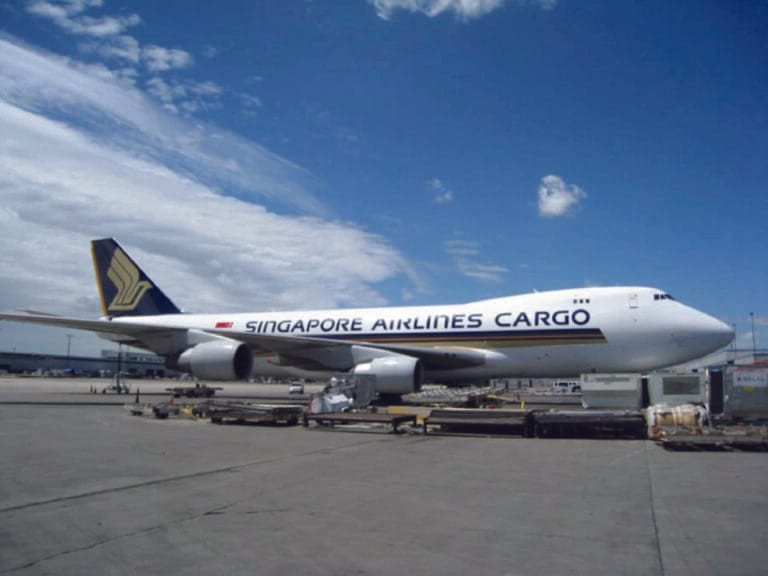- Singapore Airlines Cargo is strengthening digital booking, vertical specialisation, and fuel-efficient fleet upgrades to maintain its position as Southeast Asia’s air cargo hub amid rising regional competition
- Pharma and perishables lead SIA Cargo’s focus with THRUCOOL covering 23 destinations for pharmaceuticals and THRUFRESH spanning 17 cities for perishable goods, while the Parxl e-commerce platform expands to over 30 destinations using generative AI to improve service and onboarding
- The airline enhances speed, visibility, and sustainability through digital tools, IATA ONE Record standards, internal AI assistant JARVIS, SAF Book-and-Claim options, and fleet renewal with A350F freighters burning up to 40% less fuel, positioning itself against rival hubs investing heavily in cargo infrastructure
As trade lanes across Southeast Asia heat up, Singapore’s position as the region’s air cargo nerve centre is under pressure. Regional competitors are accelerating investments in infrastructure, while shippers are demanding greater transparency, faster turnaround and lower emissions. In response, Singapore Airlines Cargo is pushing harder into digital booking, vertical specialisation and fuel-efficient fleet upgrades—signalling a more aggressive play to retain control of high-value flows.
Strong demand continues across Asia-Europe and Asia-Americas lanes, with e-commerce, pharma and perishables leading the charge. But it’s not just about capacity—network integration, automation, and data visibility are fast becoming the new currency of competition.
Pharma and perishables take the lead
SIA Cargo is increasingly focused on cargo segments that require precision and consistency. The airline’s THRUCOOL network for pharmaceuticals has grown to 23 destinations, supported by CEIV Pharma standards and regular quality audits. Meanwhile, THRUFRESH, aimed at perishable goods, now spans 17 cities, offering cold chain reliability that’s in growing demand as fresh produce and temperature-sensitive cargo travel farther.
“Cross-border e-commerce flows as well as time- and temperature-sensitive cargo, including pharmaceuticals and perishables, are buoyant,” the airline said, citing strong momentum across intra-Asia as well as long-haul corridors. With shippers becoming more discerning about the handling of delicate freight, vertical specialisation has become a strategic differentiator.
SIA’s e-commerce platform, Parxl, now covers over 30 global destinations and is expanding its capabilities through generative AI. The aim is to improve onboarding and service delivery for online merchants—while doubling down on a sector that continues to outpace traditional cargo flows.
This shift also aligns with broader market dynamics: Southeast Asia’s share of global e-commerce is growing, particularly as platforms and fulfilment networks mature across Indonesia, Vietnam and the Philippines. SIA Cargo is positioning Parxl to capitalise on this momentum.
Competing on speed, visibility and emissions
Digital convenience is no longer a novelty in airfreight—it’s an expectation. SIA Cargo has expanded its digital footprint, enabling forwarders in over 20 markets to book space directly. New service layers are in development for rollout in FY2025/26.
The airline is also backing IATA’s ONE Record data standard through joint initiatives with IBS Software and Cargo Community Network (CCN), including the implementation of digital milestones like Freight into Warehouse (FIW) and Freight out of Warehouse (FOW). These upgrades are designed to improve visibility, particularly for time-sensitive goods.
GenAI tools are also finding a foothold. SIA has rolled out JARVIS, an internal AI assistant that helps staff retrieve operational guidelines and sales procedures without trawling through documents—streamlining internal processes as regulatory and product complexity grows.
Sustainability remains a parallel pressure point. “Freight forwarders and shippers can purchase SAF certificates from SIA to reduce their carbon footprint associated with their air shipments,” the carrier said, highlighting its Book-and-Claim model that allows customers to cut Scope 3 emissions without physical SAF use.
Fleet renewal is a key emissions lever. SIA’s future A350F freighters will burn up to 40% less fuel than the older 747-400Fs they’re replacing—a projected annual reduction of 400,000 tonnes in carbon emissions at current operational levels.
Yet, as SAF supply remains limited and carbon pricing looms on the policy horizon in some markets, the cost and complexity of decarbonising air freight is likely to rise. Carriers that invest early in verifiable, market-aligned models may find themselves better positioned when shippers and regulators tighten the screws.
Singapore Changi remains a powerhouse in the region, offering rapid transshipment, advanced infrastructure, and strategic location. But that edge is narrowing as rival hubs—Bangkok, Jakarta, Ho Chi Minh City—invest heavily in cargo capabilities to capture a share of the region’s expanding logistics economy.
SIA Cargo is well aware of this challenge. “Our working relationship and collaboration with partners across the supply chain have been integral to our success,” the airline said, citing coordination with SATS, forwarders, interline partners and government agencies as a means to streamline operations and protect service levels,” the airline concluded.




